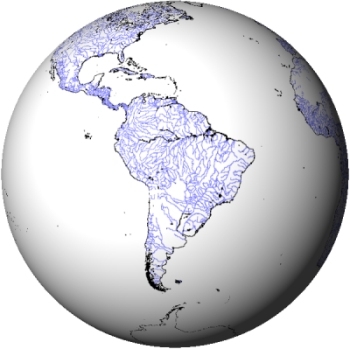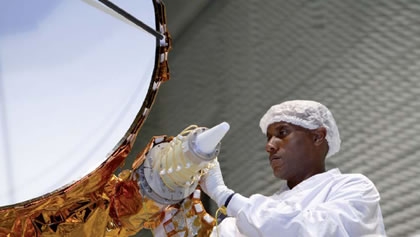Exploring new pastures
Jason-1 acquires few measurements along coastlines and catchment areas where rapidly changing terrain makes it especially difficult for the satellite’s altimeter to pick up the radar echo.

Every stretch of water (enclosed seas, lakes, rivers, flooding areas...) or even flat surfaces over lands can give valid data - as long as the satellite fly over them. Credits: Aviso
This is one of the tasks of the new satellite, which will provide more data on coasts and catchment areas, “imaging major water courses that are wide enough to be detected, like the Amazon River, for example.”Such data will be useful for coastal fisheries, oil rigs, land planning and many other applications.

For Jason-1 or Topex/Poseidon, areas where radiometer measurements are typically edited out (ie disregarded) by standard processing (in red) and ones where they are retained (in green). The Aegean Sea, in particular, is completely overlooked. Credits: Aviso
Jason-2 will achieve this advance through 2 instruments working in tandem: the DORIS precise-positioning system and the Poseidon-3 altimeter. DORIS tells Poseidon-3 what the satellite’s altitude is, while Poseidon-3 records terrain elevation. With this information, the position of the return signal can be calculated and the altimeter will no longer need to locate it. The signal will therefore be recorded continuously, even along coasts and over continental water bodies.
Dedicated missions
Another added feature on Jason-2 is its 3 passenger scientific instruments, developed partly by CNES, which will be performing an altogether different mission.

The T2L2** instrument is designed with fundamental physics in mind. As a technology passenger on Jason-2, it will synchronize clocks using a laser signal time-tagged by a ground clock and another clock on the satellite.

“These 3 instruments will not contribute directly to the main mission,” says Jacqueline Perbos. However, they will provide useful information for DORIS’s onboard clock: “On Jason-1, the clock proved sensitive to radiation. We’ve taken extra precautions this time, but if the same thing happens again, Carmen and LPT will tell us how much radiation it is exposed to. And T2L2 will help us to assess performance.”
* Light Particle Telescope
** Time Transfer by Laser Link
| Launch campaign latest. |
| Preparations for the launch scheduled 15 June are going according to plan. 19 May, the satellite’s fuel tanks were filled with hydrazine and pressurized. The adaptor mating the satellite to the launcher and protecting it from vibrations during launch is set to be mounted on 27 May. The satellite is expected to roll out to the launch pad on 2 June. |
* Light Particle Telescope
** Time Transfer by Laser Link
More about
JASON, the ocean observatory
TOPEX/POSEIDON, the beginnings of satellite oceanography
How altimetry works
TOPEX/POSEIDON, the beginnings of satellite oceanography
How altimetry works